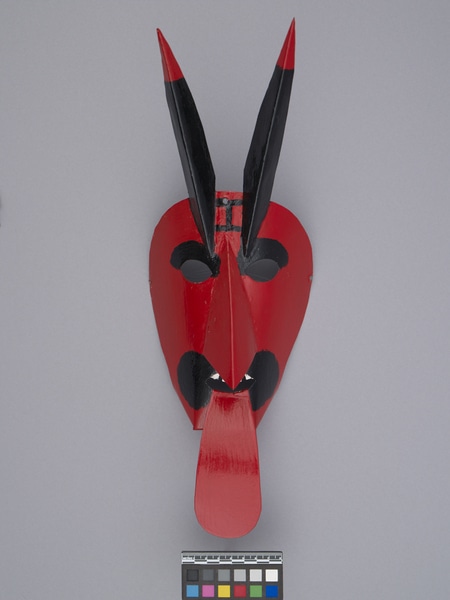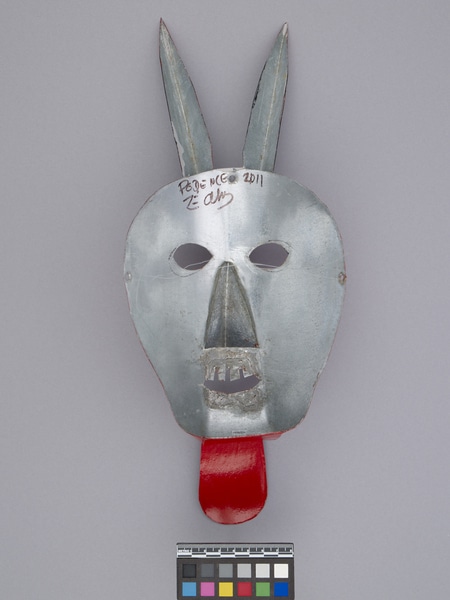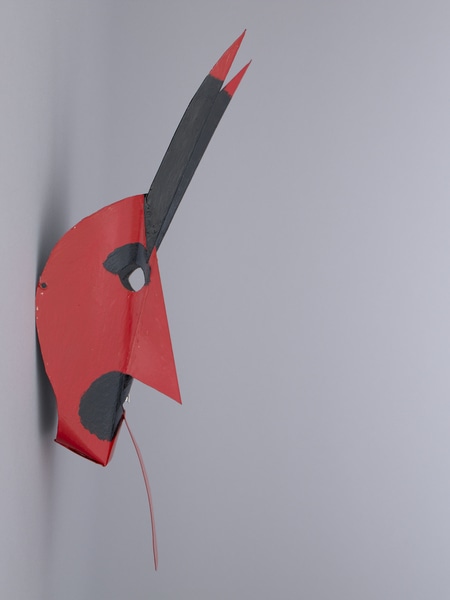Mask Item Number: 2956/209 from the MOA: University of British Columbia



Description
Red painted metal carnival mask with two long black horns extending up from the forehead, a large protruding angular nose, and openings for the eyes and mouth. A long red tongue protrudes from the mouth opening. Thick black lines are painted for the eyebrows and beard around the mouth. The tips of the horns are red, and there are three black lines painted perpendicularly to one another between the base of the horns. Four white teeth are painted above the mouth opening. There is one hole in the centre top of the mask, and one on each side.
History Of Use
Masquerade costume mask. By 2011, red and black metal masks were only being made in Podence by José Alves. Masquerade and Carnival was suppressed in Podence during the years of Portugal's dictatorship but they were temporarily revived in the 1970s, before almost again disappearing a decade later. The value of this endangered cultural heritage was then realized, leading to its rescue and resurgence to become a symbol of regional identity. Normally only hornless masks are used for performances, in order to safeguard their wearers from being accidentally stabbed. Horned masks are made as souvenirs.
Narrative
José Alves first made many of these masks (see 2956/203-215) to be used by villagers for a performance at EuroDisney in Paris; he only later agreed to allow Shelton to purchase them for the MOA collection.
Item History
- Made by Jose Alves (Maker) in Podence, Braganca, Portugal between 2010 and 2011
- Collected by Anthony A. Shelton in Portugal between 2011 and 2012
- Owned by Anthony A. Shelton before September 17, 2012
- Received from Museum of Anthropology Exhibitions Budget (Funding source) and Anthony A. Shelton (Seller) on September 17, 2012
What
Who
- Culture
- Portuguese
- Creator
- Jose Alves (Maker)
- Field Collector
- Anthony A. Shelton
- Previous Owner
- Anthony A. Shelton
- Received from
- Museum of Anthropology Exhibitions Budget (Funding source) and Anthony A. Shelton (Seller)
Where
- Holding Institution
- MOA: University of British Columbia
- Made in
- Podence, Braganca, Portugal
- Collected in
- Portugal
When
- Creation Date
- between 2010 and 2011
- Collection Date
- between 2011 and 2012
- Ownership Date
- before September 17, 2012
- Acquisition Date
- on September 17, 2012
Other
- Item Classes
- metalwork
- Condition
- good
- Accession Number
- 2956/0209